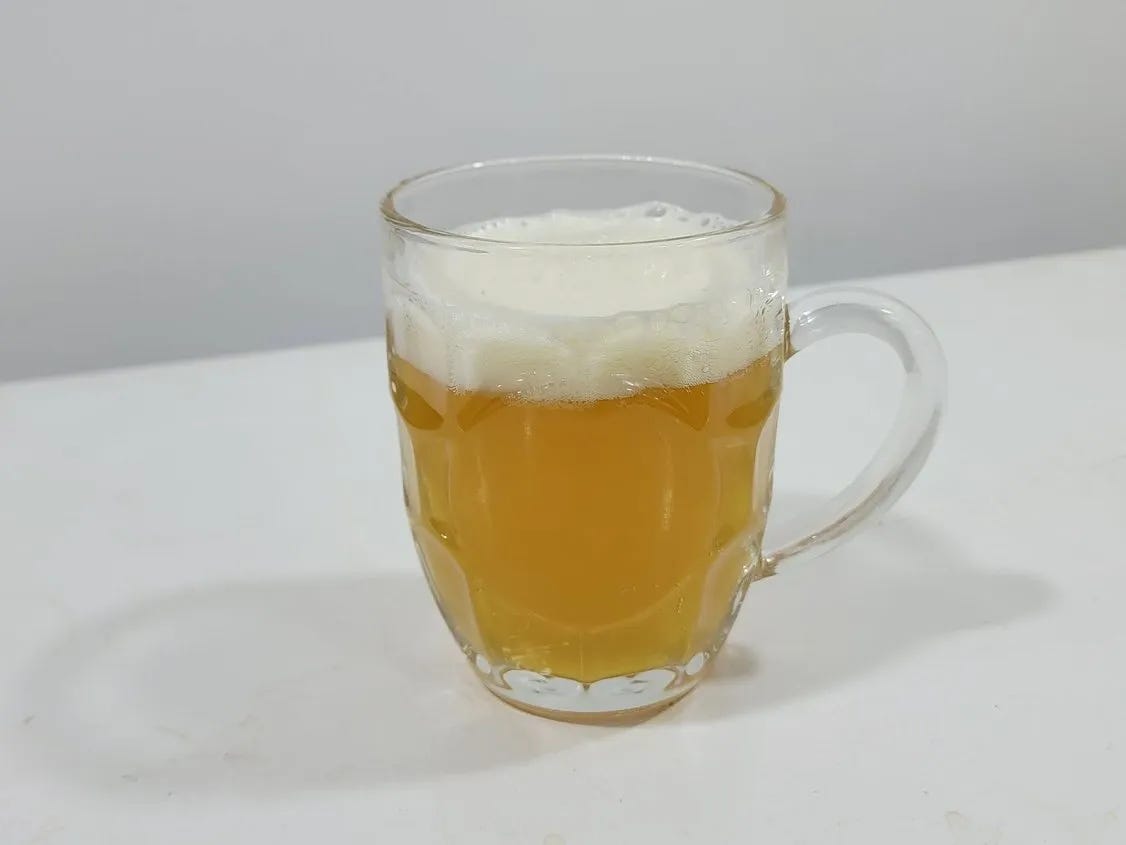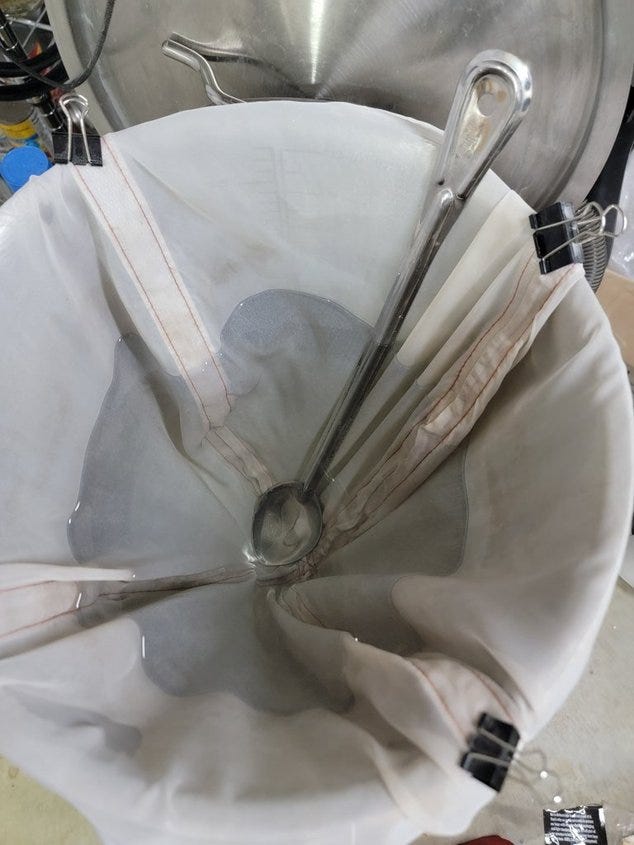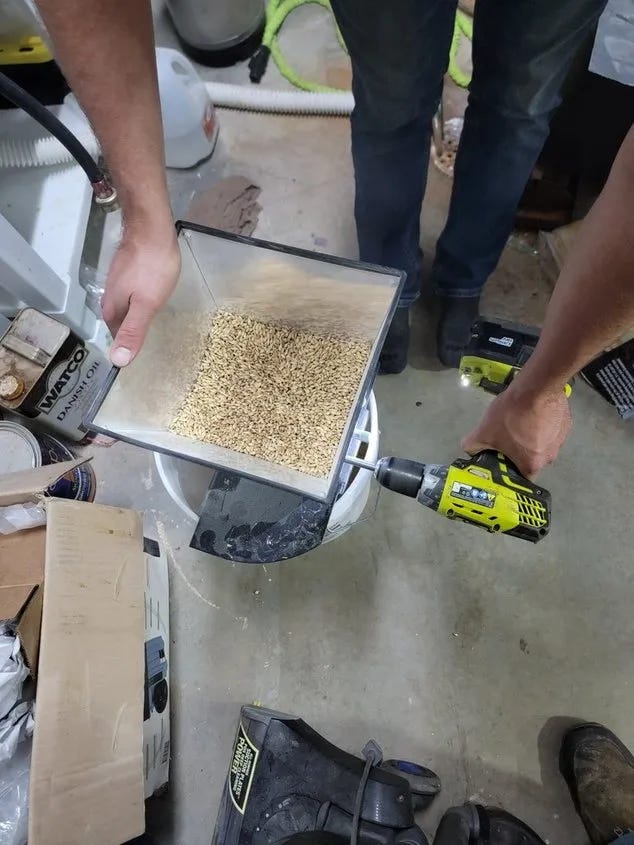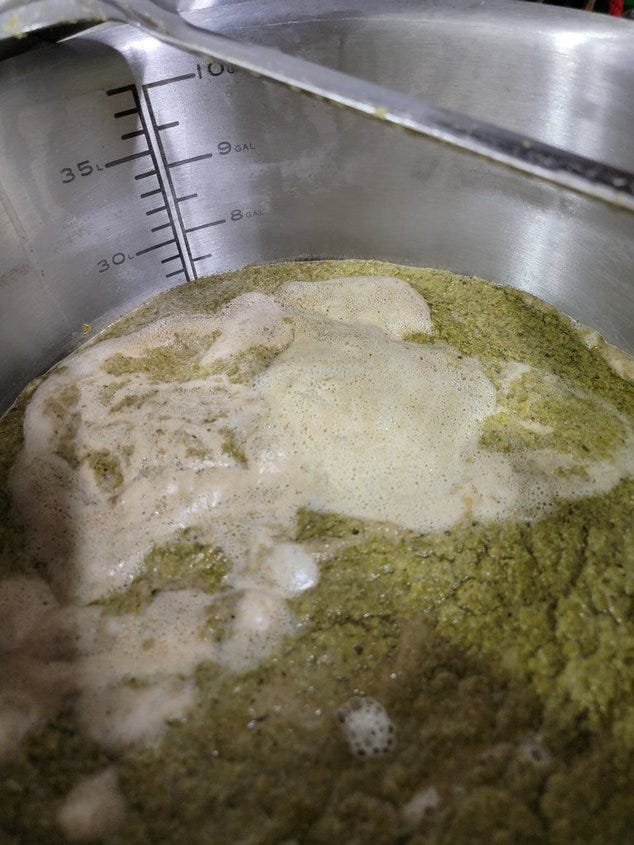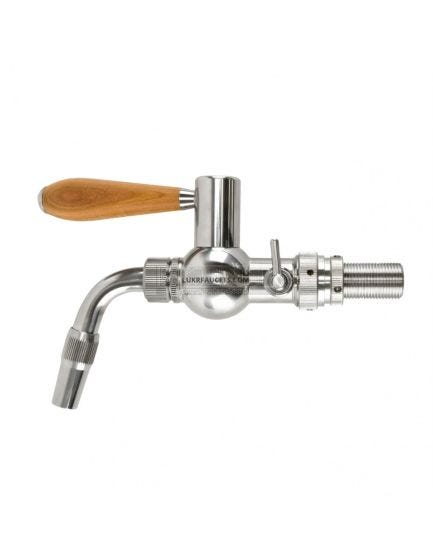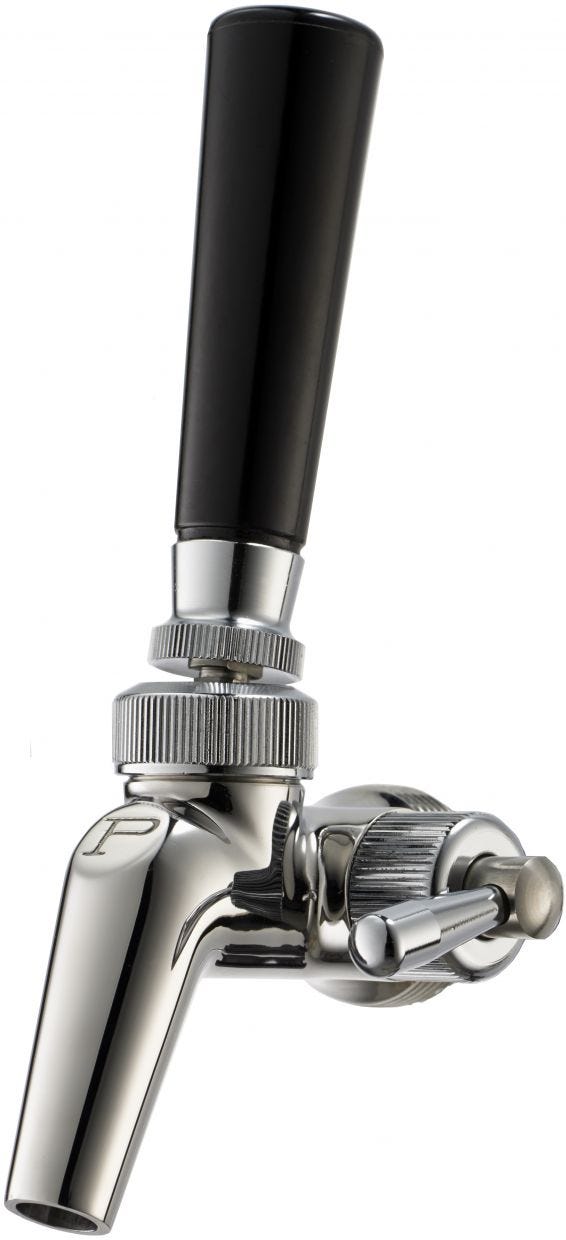Today - 09/15/04 -its a Czech Pseudo Lager.
What is a pseudo lager, well its not a true or real lager - its a fake lager. Their is one ingredient change up that makes it a pseudo lager. Yeast, instead of a true lager yeast I am pitching a Kveik yeast, Lutra. Everything else is the same. Lutra is a fast, clean fermenting yeast that is not only heat tolerant but loves heat unlike lager yeast.
Lutra should ferment this beer in a couple of days and by Friday or Saturday it will be ready to keg. Normal lager yeast require a cool area - around 50-55 degrees and 2-3 weeks to do its job. Lutra is a clean yeast, meaning it has a negligible affect on the flavor of the beer.
To get to the 80 degrees I will be using a fermenter wrap hooked up to a inkbird wifi controller. Temp will be set for a delta of 1 degree. 79-81 so average will be 80 degrees.
The recipe
7 gallons distilled water.
7.5 lb Weyerman Barke Pilsner malt Its a pilsner so pilsner malt makes up the base of the grain bill
1 lb Weyerman Munich Malt. adds a breadcrust / bread flavor
.5 lb Rarh White Wheat malt Used for head retention
.5 lb Weyerman Melanoidan Malt Czech lagers are best when decoction is used, I simply do not have the time it takes to do a decoction make. Melanoidan is a way to get the flavors and subtleties of decoction.
.2 lb Acidualted malt knock the ph down. ph should be 5.2-5.5 and acidulated malt should get it there. This ph level helps break the starches down.
Tilt Hydrometer
I did finally breakdown and buy a Tilt Hydrometer. This device goes into the cooled wort to measure the temperature and fermentation process. It measure the gravity as the yeast does it work. This takes the guess work out of the fermentation process as before I just let the fermenter set for two - 3 weeks to be sure the yeast was done. Now I know when its done. It transmits the data via bluetooth to my phone.
Hops
Saaz is a "noble" variety of hops. It was named after the Czech town of Žatec. This hop is used extensively in Bohemia to flavor beer as the Czech pilsner. Saaz hops accounted for more than +2⁄3 of total 2009 hop production in the Czech Republic.
I put 1.5 oz of hops in at first wort - bittering ( when I puled the grain bag out and start to head to boiling of the wort). You use the bittering phase to over come the intense sweetness of the malt in the wort. I then added 1.5 oz at 20 minutes left in the boil, I then added another 1.5 oz at flame out. the 20 minute addition added around 5 IBUs and mostly contributed to flavor and aroma. The flame out addition was all flavor as the bittering at this point in the process is negligible.
At 10 minutes left in the boil I added yeast nutrient and a whirfloc. The yeast nutrient give the yeast the food it needs to start fermenting. Whirfloc is use to clarify - ie settling the yeast an proteins.
Thus the hops make this a Czech Pilsner.
Yeast:
Dried Lutra's clean canvas, huge temperature range, high alcohol tolerance and fast finishing speeds means unrivaled flexibility and versatility for nearly any style. For a refreshing pseudo-lager or a huge imperial stout -- for any reason you're using a neutral dry yeast, use Dried Lutra and get more, faster.
As you can see Lutra is a beast. Of all the yeasts I have used none compare to this in fermentation.
I like using dry yeast as they are more stable and do not require a starter a day or two ahead. Dried yeast also can be stored longer, usually 1-3 years depending on the strain, liquid has a use by date of 3-6 months. Dried yeast also can ship in summer without a freeze pack. I recent had some liquid yeast come in, a 1 day delay in transit has maybe ruined that yeast. I’ll know yes or no when I build the starter.
Brewers Friend calculated this would come in at 1.044 OG and finish at 1.008 and finish with an ABV of 4.74%
Actual results- 1.044 so I hit that right on the nose, and a FG of 1.003 so 5 points off / lower. Not a big surprise since I used Lutra. This will be a drier beer. Lower FG = drier and higher ABV. Using these number the ABV came in at 5.38%. Higher than I was hoping so next time if I want a 4.74 ABV I need to lighten up on the malts by .5 lbs. A normal Czech Lager yeast would have finished at the 4.74% or very close to that. Lutra is a beast, it just leaves very little sugar behind.
Preliminary results, yeast:
The Kveik yeasts are beast. Within 15 minutes of pitching lutra went to work, by 30 minutes it was bubbling like a aquarium bubbler in a fish tank, at 24 hours it was still going strong at 36 it had peetered out and now hour 60 its pretty much done with a burp now and again. It took the wort from 1.044 OG ( original gravity) to 1.003 FG ( final gravity). Bring the ABV ( alcohol by volume) to 5.38% This yeast is a a beast, it gets the job done in far less time than any other yeast and at ridiculously high temps. A normal lager yeast would have required cooler temps and 2-3 weeks to ferment.
I will let this set until Thursday, check it again for activity and see if the gravity has moved, if not into the keg and get it carbed up and maybe by Sunday it will ready to drink. Of course If I wait 3-4 weeks it will mellow out. I am however going to pull a few ounces every few days and report the differences as it ages. Usually 3-4 weeks is when you can really taste the flip from a young beer with sharp notes to a aged beer with subtle notes.
I did keg this Friday 09/20/2024 as I just had too much to do Thursday evening. No big deal. Their is a little flexibility from fermentation to kegging.
I bled the keg of oxygen - co2 is heavier than air so you merely hook up the gas lines and fill the keg, then release the Pressure relief valve several times. Tuesday evening I turned the pressure up to 25 psi to hurry along the carbonation process. Pulled the first draw Wednesday evening. Oh what a treat, it was foamy due to the excess co2 I put to it to carb it faster, but once settled you could tell this was a keeper.. It is truly hard to believe this beer is tappable and ready to serve in less than 2 weeks. It was good Wednesday evening, but tonight Friday 09/27/2024 it is phenomenal. The fruity and floral aromas have settled down some so they are not just stomping on your palette. Far more subtle now , which lets your palette distinguish the subtleties. It is a flavor expulsion from fruity to floral and just a hint of spiciness. Since a lot of our taste is from our sense of smell the open design of the mug let you take in the whole olfactory of the hops and malt. This is a more hop forward beer vs a malt forward. Hops take center stage in this dance of flavors and aromas
As you can see, it has some clearing up to do, but that comes with lagering which settles out the yeast.
I have had two people taste test it. One Wednesday and one Friday. Both said it was a really good beer. I had a taste both times, it is far better Friday, but it was no slouch Wednesday. The aroma is fruity and floral, the mouth feel is clean and crisp, it is filling so its a 1 or two beers and done. This seems to be true of many of the beers I have made. They are not heavy but they are filling. The Helles and some Scottsh ales I have made are session beers - beers in which do not fill you up and they are quit sessionable.
I will now unhook the faucet tap and let it set and age for 3-4 weeks, limit temptation. Hopefully in that time I can install my new Perlick SS690 tap that has a flow control so I aerate the beer as it pours. Maybe some day I can get a Lukr side pull tap which is what is used in Czechoslovakian to serve these lagers. Now I just simply hold the mug lower so I get a acceptable head of foam help attenuate the aromas. The LUKR has a cool factor with the side pull but at $350 its a cool factor with a heafty price. On the other hand Perlick has a model that claims to do the same thing for less than $100.00.
304 Stainless Steel construction won't pit or tarnish and the flavor of the beverage will not be tainted
Flow control provides more control at the point of serving to help with hard-to-pour brands
Push-back creamer enables the operator to pour a precise amount of foam every time
Patented forward sealing design eliminates the need for a valve shaft exposed to beer and air
Spout angle is more vertical allowing a more thorough draining after each pour - no horizontal area for beer to collect
NSF approved
I serve this in mug just like in Czechoslovakia, what a game changer this is. The huge open top, with the 1” layer of foam really brings out the subtle aromas of the Saaz hops and holds it. That layer of foam keeps the beer from oxidizing while you drink it.
I will have a final update once I tap into this again in about a month. Right now at 12 days I would say this is a keeper. I can only speculate this as all beers will get better with some age.
I recently have been to several tap houses, what a disappointment. The craft beers have come out with no head and not all that cold. This headless pour seems to be an American thing, as most other countries put a head on their beer. No head leads to a bland beer. The bubbles enhance the mouth feel and helps in the aroma distribution as you start drinking the beer. Where this idea of no head came from I have no idea, but it really needs to be sent packing back to where it came from Sure we all want a full glass but get a bigger glass and put an inch of foam on top.
https://draftmag.com/beer-head/
Froth on Your Beer: Benefits and Significance
Froth on a beer is a sign of a good beer. The foaming beer means that you’re about to enjoy properly brewed beer that underwent complete fermentation and oxidation.
A slight level of carbonation exists between your glass and lips, protecting your mouth from flavorless water or just flat beer. While some beers have significant amounts of froths, others may have less. It’s best to consume most beers when they still contain a healthy amount of froth.
The beer foam will tell you if your brew can retain its flavor over time while providing texture to complement the taste. Foam in your beer is also vital because it ensures freshness and a great taste. The thicker the foam spotted on your beer, the higher the carbonation level.
https://www.brewgem.com/how-to-pour-the-perfect-beer-understanding-the-role-of-head/
Key Takeaway: The head on a beer is not just for looks, it plays a crucial role in the overall drinking experience. It affects the aroma, flavor, and mouthfeel of the beer. Understanding the science behind the head can help in pouring the perfect beer every time, from considering the correct temperature of the beer and glassware to choosing the appropriate pouring technique and glassware for each beer style. Properly serving and enjoying the beer involves appreciating the aroma, allowing the head to interact with your taste buds, and noting how it contributes to the overall experience.
Even bottled or canned beer poured into a glass makes the beer taste far better. Its time to enjoy beer for more than the buzz.
I hope you enjoy this more of an in depth look at the brewing process, this Czech Lager in particular and the geek out on proper beer serving with a head - at least my opinion on how to serve beer properly.
Thank you
Martin




